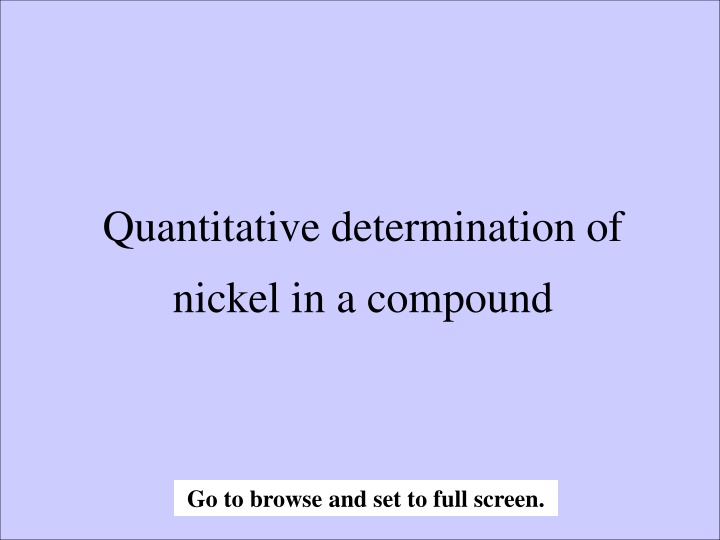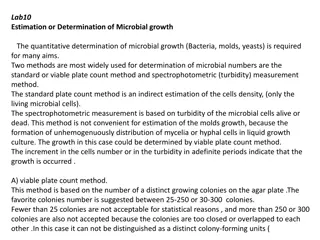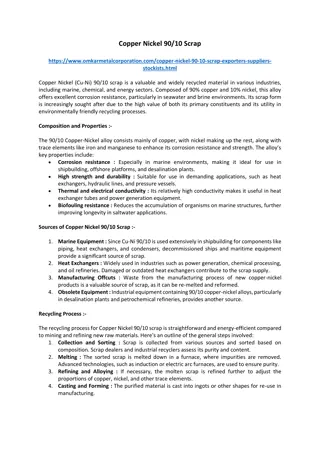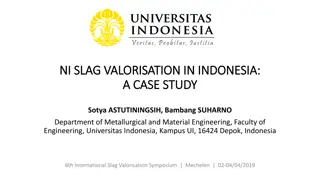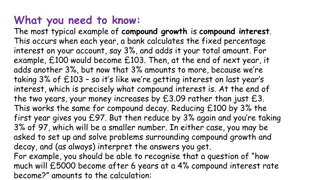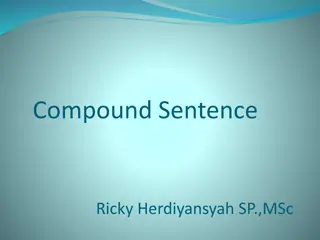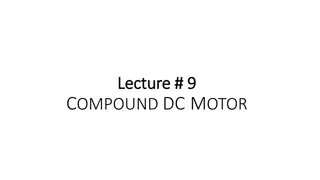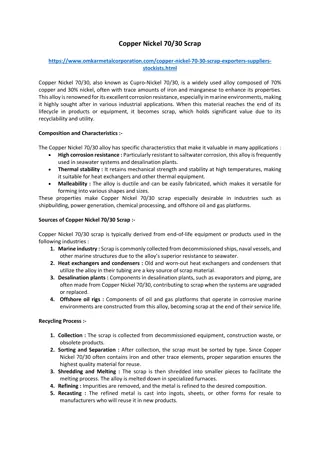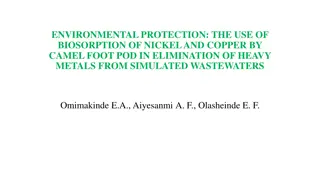Quantitative Determination of Nickel in a Compound
Learn the step-by-step process of quantitatively determining nickel in a compound using beaker tongs, crucibles, desiccator, analytical balance, and various chemical solutions. From obtaining and weighing crucibles to heterogeneous precipitation, this method involves careful measurements and heating processes to achieve accurate results.
Download Presentation

Please find below an Image/Link to download the presentation.
The content on the website is provided AS IS for your information and personal use only. It may not be sold, licensed, or shared on other websites without obtaining consent from the author.If you encounter any issues during the download, it is possible that the publisher has removed the file from their server.
You are allowed to download the files provided on this website for personal or commercial use, subject to the condition that they are used lawfully. All files are the property of their respective owners.
The content on the website is provided AS IS for your information and personal use only. It may not be sold, licensed, or shared on other websites without obtaining consent from the author.
E N D
Presentation Transcript
Quantitative determination of nickel in a compound Go to browse and set to full screen.
Beaker tongs Part 1 Crucibles Desicooler Crucible tongs
Obtain two crucibles from the oven, put the lid on and let them cool on the bench top for 20 min. Then weigh them accurately on the analytical balance.
Use crucible tongs to transfer crucible to analytical balance. Record the mass in your notebook.
Part 2 Homogeneous precipitation To a clean 400 mL beaker add about 200 mL of distilled water and 5 drops of 6 M HCl.
Add 15.00 mL of your unknown solution to the solution in 400 mL beaker. Waste beaker 15.00 mL pipet Record the unknown number in your notebook.
Place this dilute acidic nickel solution on a hot plate in the fume hood. Set the hot plate on medium heat. Steaming nickel solution.
Add about 20 g of urea. Weigh on the triple beam balance.
Cover the beaker with watch glass and let the solution heat for one hour. After one hour the solution should be colorless with a red precipitate dispersed in it.
Part 3 Heterogeneous precipitation Pipet 15.00 mL of your unknown Ni solution into a clean 600 mL beaker.
Add 350 mL distilled water, 2.50 g of NH4Cl. And then add 2.5 mL of concentrated ammonia.
lift plunger carefully press down slowly
Place the beaker on the hot plate. Add about 20 mL of the 1% DMG reagent to the solution. Homogeneous solution Heterogeneous solution from part 2
Let it cool for 5 minutes. Then place it in an ice- water bath for 10 min. After adding 20 ml of 1% DMG (heterogeneous solution) stir well for 20 minutes or until the precipitate settles.
crucible aspirator rubber cone utility clamp vacuum filter flask black vacuum (rubber) tubing stand
Filter the solution through one of the pre-weighed crucible.
Rinse beaker several times with the small quantity of cold distilled water.
Back to part 2 homogeneous precipitation. After one hour add 5 drops of 6 M ammonia solution and swirl. Remove the solution from the heat. Let it cool for 5 minutes, then place it in ice-water bath for 10 minutes and repeat the filtration through one of the pre-weighed crucible.
Place them in the oven and dry to constant mass. Homogeneous precipitate Heterogeneous precipitate
